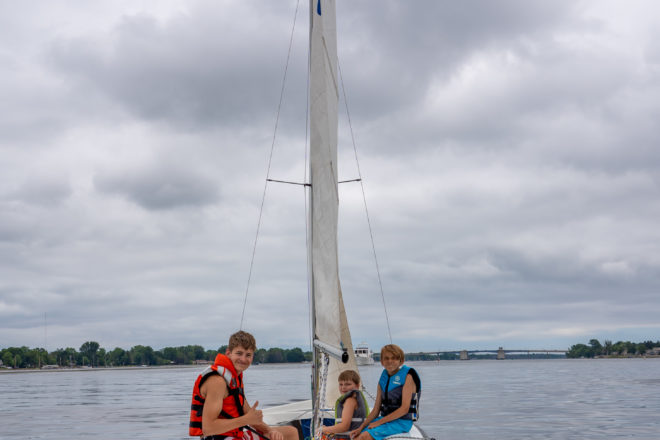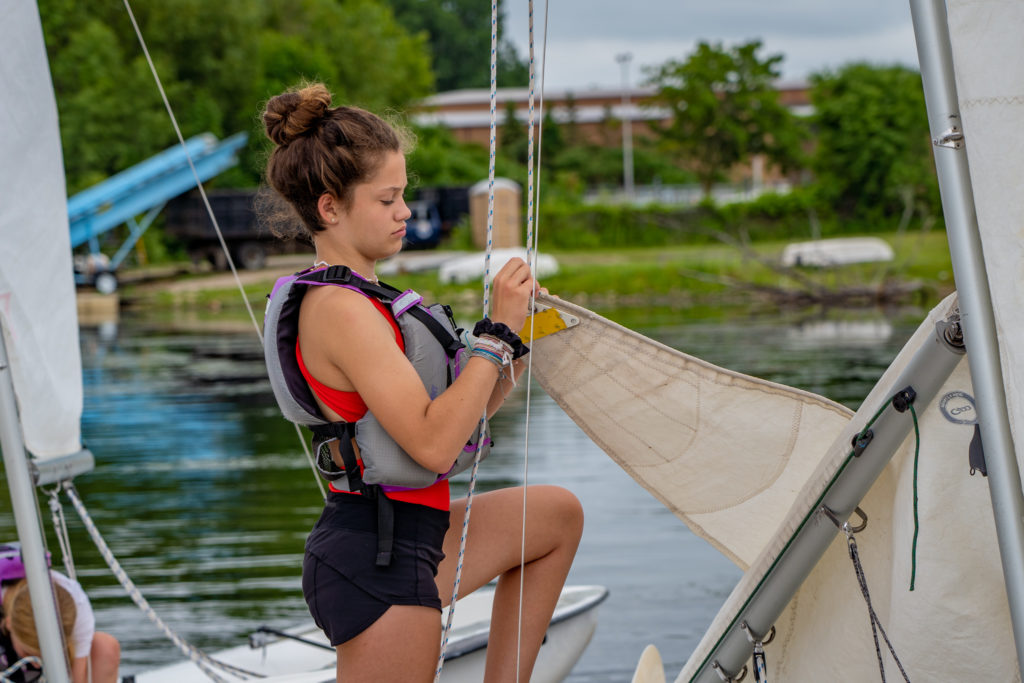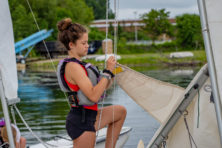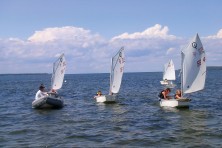Sail Training Foundation classes build skills and bonds
- Share
- Tweet
- Pin
- Share

Students of the Sail Training Foundation can expect one thing for sure on the first day of classes: the boat will capsize.
“On the first day,” said instructor Keely Troup, “we’re required to do both a swim test and a capsize test before we can let them out on the water.”
Troup has sailed since she was 7 and instructed since she was 15, making this her fourth year. Now co-director of the program, she and the other instructors – all 19 or younger – teach all the classes at the school.

While explaining the capsize drill, she said that week one of the two-week classes has more activities like that as the kids get acquainted with the boats. Week two is looser, and instructors are more concerned then with getting the students out on the water as much as possible.
Barring a storm or wind speed of more than 35 miles per hour, the best place for them to learn is on the water, Troup said, so the instructors try to keep on-land teaching to a 25-minute maximum each day. Especially with the class geared toward older and more experienced students, getting them on the water as soon as possible keeps them more engaged and focused.
Linnea Kennerhed, a 12-year-old student who’s sailed for five years, said that’s the best part of sailing.
“I just love being on the water,” she said.
The Sail Training Foundation offers three classes, all of which are taught by Troup and the other instructors. The two daily classes have 18 students each: one with younger kids on individual boats, and a second with two to three students per boat. The third class, for adults, meets once a week in the evening and is capped at 14 people.
But trying to register for any of these is a scramble in the spring when registration opens. The waitlists for every session – there are four daily sessions and one adult session each summer – are always long, Troup said.
But the students seem to think it’s all completely worth it. When I asked one participant, Fritz Kremer, what his favorite part is, all he said was, “Sailing,” with one of the widest grins I’ve seen.
A lot of the kids and parents, Troup said, treat the classes like summer camp or child care and attend multiple sessions. While I was there, one of the students looked genuinely dejected when she told Troup she couldn’t come back the following week.
The relationships between the kids and instructors are exceptionally close. Boat assignments in the older classes are highly contested, Troup said, and some of the students from Door County have even switched schools to be in the same one as their sailing friends.
The whole time I joined an afternoon class, boats sidled up to the crash boat that I was on with Troup to ask to switch boats, to ask what time it was (her consistent answer was “Game time”) or to borrow sunscreen. One of the students who races competitively, Olive Goettelman, takes both the morning and afternoon classes and spends upwards of eight hours with Troup every day.
“She’s a better racer just because she’s on the water so much,” Troup said. “She actually just won our regatta the other day.”
Being on the water is the essential part, Troup said again and again because there is no better way to learn.
Some of the sailors are siblings or cousins who are spending a few weeks or the summer with their grandparents in Door County. She said they often see those grandparents sitting on their porches across the canal, watching their grandkids’ adventures.
“We’ve had problems in the past when we have capsize drills and people call 911 because they think we’re actually capsizing,” Troup said. “Usually it’s the grandparents [who are] worried about their own kids.”
They all take it in stride, though, she said. The Coast Guard knows the sailing school, as do most of the people at the marina.
“It’s a real community here,” she said.



